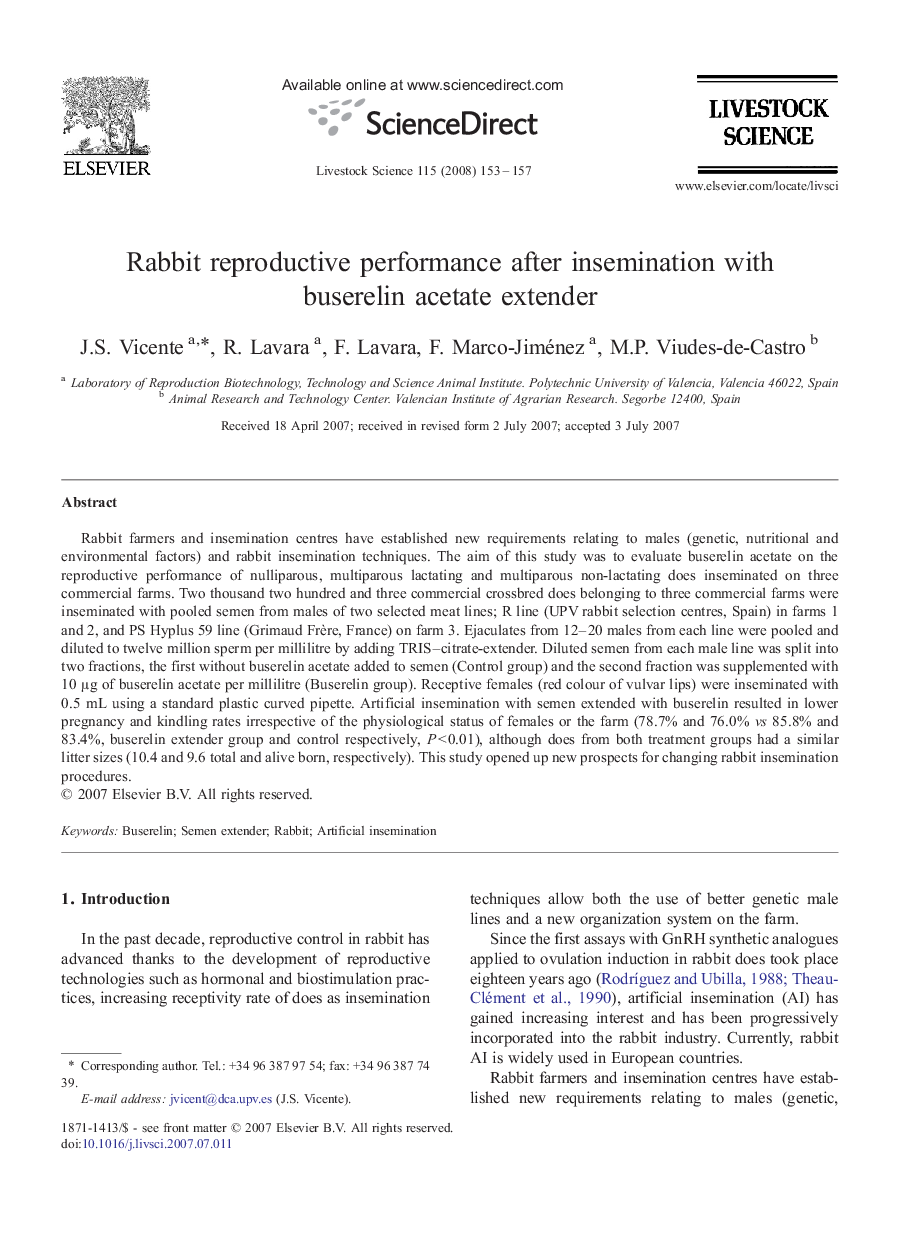| Article ID | Journal | Published Year | Pages | File Type |
|---|---|---|---|---|
| 2448496 | Livestock Science | 2008 | 5 Pages |
Rabbit farmers and insemination centres have established new requirements relating to males (genetic, nutritional and environmental factors) and rabbit insemination techniques. The aim of this study was to evaluate buserelin acetate on the reproductive performance of nulliparous, multiparous lactating and multiparous non-lactating does inseminated on three commercial farms. Two thousand two hundred and three commercial crossbred does belonging to three commercial farms were inseminated with pooled semen from males of two selected meat lines; R line (UPV rabbit selection centres, Spain) in farms 1 and 2, and PS Hyplus 59 line (Grimaud Frère, France) on farm 3. Ejaculates from 12–20 males from each line were pooled and diluted to twelve million sperm per millilitre by adding TRIS–citrate-extender. Diluted semen from each male line was split into two fractions, the first without buserelin acetate added to semen (Control group) and the second fraction was supplemented with 10 μg of buserelin acetate per millilitre (Buserelin group). Receptive females (red colour of vulvar lips) were inseminated with 0.5 mL using a standard plastic curved pipette. Artificial insemination with semen extended with buserelin resulted in lower pregnancy and kindling rates irrespective of the physiological status of females or the farm (78.7% and 76.0% vs 85.8% and 83.4%, buserelin extender group and control respectively, P < 0.01), although does from both treatment groups had a similar litter sizes (10.4 and 9.6 total and alive born, respectively). This study opened up new prospects for changing rabbit insemination procedures.
